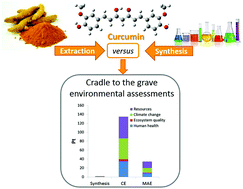Artemisia Annua L
Ultrasonic Assisted Extraction of Artemisinin from Artemisia Annua L. Using Monoether based Solvents
Abstract
Artemisinin is a kind of natural antimalarial drug exhibiting low toxicity with a very fast action against malaria. Solvent extraction is the most widely used method to separate artemisinin from the Chinese medicinal herb Artemisia annua L. In this study, a series of monoether based solvents have been proposed to extract artemisinin and propylene glycol methyl ether (PGME) was found to be the most appropriate one for this extraction. Ultrasonic irradiation was demonstrated to be able to assist artemisinin extraction. Influences of extraction conditions, including liquid/solid ratio, extraction temperature, ultrasonic time, ultrasonic power, on the extraction efficiency were discussed by single factor experiments, and the main influence factors were optimized by responds surface method. The extraction mechanism was explored with spectroscopic characterizations, and kinetics of this process was also studied. Results indicate that ultrasonic assisted extraction using PGME has faster extraction rate than conventional solvents, and ultrasonic can significantly enhance mass transfer. Compared with conventional extraction, the process developed here exhibited higher efficiency (13.79 mg/g vs. 13.29 mg/g) and short extraction time (decreased from 8 h to 0.5 h) at a relatively low temperature. In addition, PGME has low toxicity and volatility, making the extraction process more safe and reliable. Therefore, this proposed method demonstrates that PGME based ultrasonic assisted extraction is a rapid, efficient, simple and safe technique for natural product extraction.
/////////// Artemisinin, Artemisia Annua L, extraction













